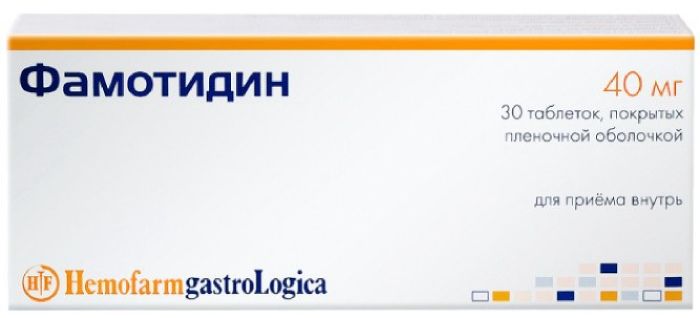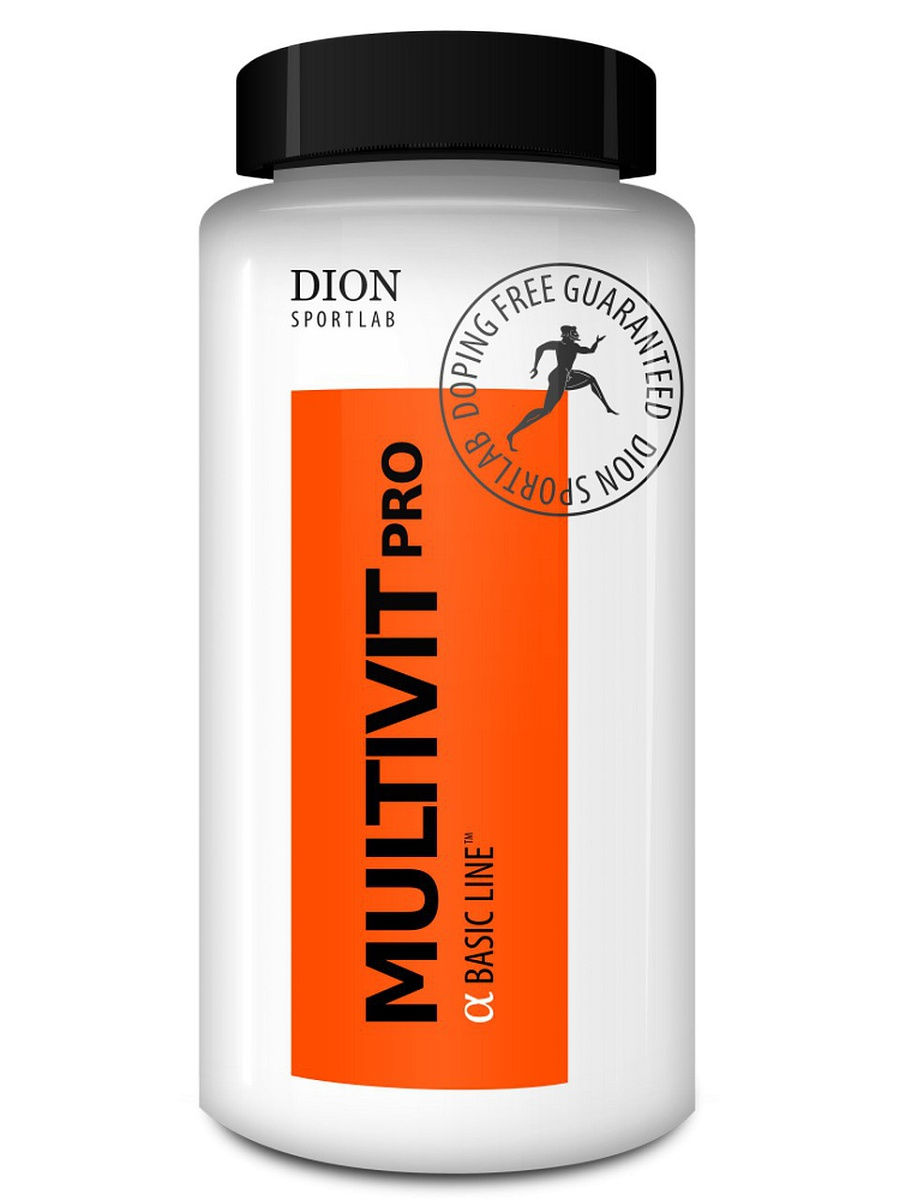- No products in the cart.
Omez caps. kish.rastv. 10 mg 10 pcs
$1.74
Omez caps. kish.rastv. 10 mg 10 pcs
Description
Composition
Active substance:
Omeprazole 10 mg.
Excipients:
59 mg mannitol, 4.5 mg of crospovidone, poloxamer (407) 1.25 mg hypromellose (1828) 2 mg, 0.75 mg of meglumine.
Coating: Povidone (K-30) 6.7 mg.
Enteric coating: Methacrylic acid-ethyl acrylate copolymer [1: 1] (methacrylic acid copolymer [type C]) 18 mg Triethyl citrate 1.8 mg Magnesium stearate 1 mg.
Composition Gelatin capsule size solid №3: Housing: iron oxide yellow dye (E172), titanium dioxide (E171), sodium lauryl sulfate, water, gelatin. Cap: dye Brilliant Blue (E133), coloring sunset yellow (E110), coloring agent red amazing (El 29), a dye FLOXIN B (dye red D & C RED # 28), titanium dioxide (E171), sodium lauryl sulfate, water, gelatin.
Black lettering on capsules: Ink S-1-8114: shellac (20% esterified) in ethanol, iron oxide black dye (E172), n-butanol, propylene glycol (E1520), indigo carmine dye (E132), red dye amazing (E129 ), quinoline yellow dye (E104) brilliant blue dye (E133); Ink S-1-8115: shellac (20% esterified) in ethanol, iron oxide black dye (E172), ethanol, methanol, dye indigo carmine (E132), red dye amazing (E129), quinoline yellow dye (E104), coloring diamond blue (E133).
Description:
Opaque hard gelatine capsules size № «3», yellow body, light purple cap and black marking «OMEZ 10″ on a lid and body of the capsule. Contents of capsules – granules from almost white to light yellow in color.
Product form:
Enteric capsules of 10 mg.
10 capsules in blister (PVC / AL / PA) foil / aluminum foil.
1 blister together with instructions for use in a cardboard pack.
Contraindications
The symptoms of gastroesophageal reflux, such as heartburn, acid regurgitation.
Hypersensitivity to omeprazole, substituted benzimidazoles or other components of the formulation.
The simultaneous use of drugs c nelfinavir, atazanavir, erlotinib, posaconazole.
Children up to 18 years.
Carefully
In the presence of symptoms such as substantial spontaneous weight loss, recurrent vomiting, vomiting mixed with blood, impaired swallowing, discoloration of feces (tarry stools), and in the presence of gastric ulcer (or suspicion of its presence) before treatment to exclude malignancy, because the treatment can lead to masking the symptoms and delay the correct diagnosis.
Dosage
10 mg
Indications
The symptoms of gastroesophageal reflux, such as heartburn, acid regurgitation.
Interaction with other drugs
Active substances having a pH-dependent absorption
Reduced gastric acidity when omeprazole may increase or decrease the absorption of pharmacologically active substances.
Nelfinavir, atazanavir
While the use of omeprazole can be observed a significant reduction in plasma concentration of atazanavir and nelfinavir.
The simultaneous use of omeprazole and nelfinavir contraindicated. The combined use of omeprazole (40 mg daily) reduces nelfinavir exposure by approximately 40%, and the average exposure of the pharmacologically active metabolite M8 is reduced by 75-90%. In collaboration can participate mechanism of inhibition of CYP1C19.
Concomitant use of omeprazole with atazanavir is not recommended. The combined use of omeprazole (40 mg daily) and 300 mg of atazanavir / ritonavir 100 mg to healthy volunteers resulted in a 75% reduction of atazanavir exposure. Increasing the dose of atazanavir to 400 mg of omeprazole does not compensate for the influence of exposure to atazanavir. Use of 20 mg of omeprazole per day with atazanavir 400 mg and 100 mg ritonavir in healthy volunteers resulted in approximately 30% reduction of atazanavir exposure and exposure at a comparable single dose of atazanavir 300 mg and 100 mg of ritonavir.
Digoxin
Concomitant treatment with omeprazole (20 mg daily) and digoxin in healthy volunteers the bioavailability of digoxin increased by 10%. Despite the fact that the glycoside intoxication in patients receiving omeprazole is not a part of the event, required increased monitoring, especially when treating elderly patients.
clopidogrel
The cross duration clopidogrel clinical trial in a loading dose of 300 mg (75 mg daily) and clopidogrel combination with omeprazole 80 mg was 5 days. Exposure to the active metabolite of clopidogrel is reduced by 46% (in the 1 st day) and 42% (on day 5) with coadministration clopidogrel and omeprazole. The average time for inhibiting platelet aggregation was reduced by 47% (24 h) and 30% (on day 5) with coadministration clopidogrel and omeprazole. In another study it was shown that clopidogrel and omeprazole at different times did not prevent their interaction that is likely explained by the inhibitory effect of omeprazole on CYP2C19. According to the results of observational and clinical studies have provided conflicting evidence about the clinical impact of this PK / PD interaction in terms of major cardiovascular events.
Other drugs
Absorption posaconazole, erlotinib, ketoconazole and itraconazole greatly reduced, accordingly deteriorating their clinical efficacy. co-administration of omeprazole must be avoided posaconazole or erlotinib.
Drugs metabolized by isoenzyme CYP2C19
Omeprazole moderately inhibits CYP2C19 – major enzyme metabolism of omeprazole. Thus, the metabolism of other drugs also metabolized by CYP2C19, can be reduced, and their systemic effects increased. Examples of such drugs are R-warfarin and other vitamin K antagonists, cilostazol, diazepam and phenytoin.
cilostazol
In a crossover clinical study, in healthy volunteers receiving omeprazole 40mg increased Cmax and AUC cilostazol by 18% and 26%, respectively, and one of the active metabolites of cilostazol is 29% and 69% respectively.
phenytoin
Monitoring of plasma concentrations of phenytoin recommended during the first two weeks after initiation of therapy in the case of omeprazole dose adjustment of phenytoin. Monitoring and subsequent doses of phenytoin correction should be performed before the treatment with omeprazole.
Unknown mechanism of interaction
saquinavir
Co-administration of omeprazole and saquinavir / ritonavir is well tolerated in HIV-infected patients and leads to a decrease in the plasma concentration of saquinavir to about 70%.
tacrolimus
Co-administration of omeprazole increases serum concentration of tacrolimus. There should be enhanced monitoring of tacrolimus concentrations and renal dysfunction (creatinine clearance) the dose of tacrolimus adjusted if necessary.
The effect of other drugs on the pharmacokinetics of omeprazole
Inhibitors of the isoenzyme CYP2C19 and / or CYP3A4
Given the metabolism of omeprazole involving isozymes CYP2C19 and CYP3A4, medicines capable of inhibiting these enzymes (such as clarithromycin and voriconazole) can increase the serum concentration of omeprazole, reducing the rate of its metabolism.
Overdose
There is information on cases of overdose when using omeprazole oral dose of 2400 mg.
Symptoms include nausea, vomiting, dizziness, abdominal pain, diarrhea, headache, lethargy, depression, confusion.
Treatment: symptomatic. Hemodialysis is not effective enough.
pharmachologic effect
Pharmacological group:
Gastric glands secretion lowering agent – a proton pump inhibitor.
Pharmacodynamics:
Omeprazole is a racemic mixture of two enantiomers, reduces the secretion of hydrochloric acid by specific inhibition of the proton pump gastric parietal cells. When a single application is fast acting and has a reversible inhibition of gastric acid secretion.
Mechanism of action
Omeprazole is a weak base, becomes an active form in the acidic environment of the tubules parietal cells of the gastric mucosa layer where activated and inhibits the H + / K + -ATPase proton pump. Exerts a dose-dependent effect on the last step the hydrochloric acid synthesis, inhibits both basal and stimulated secretion irrespective stimulating factor.
Effect on acid secretion in the stomach
After oral administration of omeprazole 1 times a day is a rapid and effective reduction of the day and night hydrochloric acid secretion which reaches a maximum within 4 days of treatment.
In patients with ulcer duodenum 12 use 20 mg of omeprazole causing a steady decline in the 24-hour gastric acidity not less than 80%. The decrease mean maximum concentration of hydrochloric acid after stimulation of pentagastrin by 70% is achieved within 24 hours. Daily oral administration of 20 mg of omeprazole in patients with peptic ulcer disease duodenum 12 maintains acidity value at pH> 3, on average, for 17 hours. The degree of inhibition of secretion of hydrochloric acid is proportional to the area under the curve “concentration-time” (AUC) of omeprazole and not proportional to the actual concentration of drug in the blood at any given time. During treatment with omeprazole tachyphylaxis has not been noted.
Pharmacokinetics:
Suction
Omeprazole is rapidly absorbed from the gastrointestinal tract, the maximum plasma concentration is reached after 1-2 hours. The absorbed in the small intestine, usually within 3-6 hours. Bioavailability after a single oral administration is about 40% after continuous use once daily bioavailability increased to 60%. Simultaneous food intake does not affect the bioavailability of omeprazole.
Distribution
Communication omeprazole plasma proteins is approximately 95%, a volume of distribution of 0.3 l / kg.
Metabolism
Part omeprazole undergoes first-pass hepatic metabolism involving isozymes CYP2C19 and CYP3A4 with formation of inactive metabolites sulfone, sulfide and gidroksiomeprazol. Omeprazole not included parietal cells in the formation of active metabolites, completely metabolized in the liver also involving isozymes CYP2C19 and CYP3A4. Total plasma clearance was 0.3-0.6 l / min.
Excretion
The half-life is about 40 minutes (30-90 minutes). About 80% is excreted as metabolites by the kidneys, and the rest – through the intestines.
Special patient groups
In elderly patients (75-79 years), a slight decrease in the metabolism of omeprazole.
In patients with impaired renal function dose adjustment is required.
The metabolism of omeprazole in patients with impaired liver function is slowed, resulting in the increase of its bioavailability.
Pregnancy and breast-feeding
The results of epidemiological studies show no clinically significant adverse effect of omeprazole on pregnancy and the state of health of the fetus or newborn. Omeprazole enters the mother’s milk, but when using the drug at therapeutic doses, the adverse impact on the child is not expected.
Conditions of supply of pharmacies
Without recipe.
side effects
The most frequent side effects (1-10% of patients) are headache, abdominal pain, constipation, diarrhea, flatulence and nausea / vomiting.
The following adverse drug reactions were reported in clinical studies and post-marketing omeprazole. None of these reactions has not been recognized dose-dependent. Adverse reactions listed below classified according to frequency of occurrence. The incidence of adverse reactions was determined in accordance with the following classification: very frequent (> 1/10), frequent (> 1/100 to 1/1000 to 1/10000 to
System-organ class / frequency | Adverse Drug Reaction
Blood disorders and lymphatic system
Rarely | Leukopenia, thrombocytopenia
Rarely | agranulocytosis, pancytopenia
Violations by the immune system
Rarely | Hypersensitivity reactions, including fever, angioedema and anaphylactic reaction / shock
Metabolic disorders and nutrition
Rarely | Hyponatremia
Rarely | hypomagnesemia
mental disorders
Infrequently | Insomnia
Rarely | agitation, confusion, depression
Rarely | Aggression, hallucinations
Disorders of the nervous system
often | Headache
Infrequently | Dizziness, paraesthesia, somnolence
Rarely | dysgeusia
Violations by the organ of vision
Rarely | Blurred vision
Violations by the organ of hearing and labyrinth
Infrequently | Vertigo
Violations of the respiratory system, organs, thoracic and mediastinal disorders
Rarely | bronchospasm
Gastrointestinal disturbances
often | Abdominal pain, constipation, diarrhea, flatulence, nausea / vomiting
Rarely | Dry mouth, stomatitis, gastrointestinal candidiasis
Disorders of the liver and biliary tract
Infrequently | Increased hepatic enzymes
Rarely | Hepatitis with or without jaundice it
Rarely | Hepatic failure, encephalopathy in patients with underlying liver disease
Violations of the skin and subcutaneous tissue
Infrequently | Dermatitis, pruritus, rash, urticaria
Rarely | alopecia, photosensitivity
Rarely | Erythema multiforme, Stevens-Johnson syndrome, toxic epidermal necrolysis
Violations by the muscular, skeletal and connective tissue
Rarely | arthralgia, myalgia
Rarely | Muscle weakness
Violations of the kidneys and the urinary tract
Rarely | Interstitial nephritis
Violations by the reproductive system and breast
Rarely | Gynecomastia
General disorders
Infrequently | Malaise, peripheral edema
Rarely | Sweating
special instructions
If prior to the treatment with omeprazole is present one of the symptoms such as substantial spontaneous reduction of body weight, repeated vomiting, emesis with blood, impaired swallowing, discoloration of feces (tarry stool), and in the presence of gastric ulcers (or suspected at present) before treatment to exclude malignancy, because the treatment can lead to masking the symptoms and delay the correct diagnosis.
Proton pump inhibitors, especially when using the drug in high doses and long-term use (> 1 year), may moderately increase the risk of fractures of the hip, wrist bones and vertebrae, especially in elderly patients or in the presence of other risk factors.
In patients treated with omeprazole for at least three months it was registered severe hypomagnesemia, which is manifested by symptoms such as fatigue, delirium, convulsions, dizziness and ventricular arrhythmia. In most patients, hypomagnesaemia was stopped after cancellation of the proton pump inhibitor and the introduction of magnesium preparations. In patients undergoing long-term therapy or omeprazole are assigned to digoxin or other drugs that can cause hypomagnesemia (eg diuretics) should evaluate the content of magnesium prior to initiating therapy and periodically monitor it during treatment.
Omeprazole, as all drugs that reduce acidity, can lead to decreased absorption of vitamin B12 (cyanocobalamin). This should be remembered in patients with a reduced supply of vitamin B12 in the body, or with risk factors for malabsorption of vitamin B12 during prolonged therapy.
In patients treated with orally for a long time drugs, reducing the secretion of gastric glands, most often noted the formation of glandular cysts in the stomach. These phenomena are caused by physiological changes as a result of inhibition of the secretion of hydrochloric acid and subjected to reverse development against the background of continued therapy.
Reduced secretion of hydrochloric acid in the stomach leads to increased growth of normal intestinal microflora, which, in turn, may lead to a slight increased risk of gastrointestinal infections caused by bacteria of the genus Salmonella spp. and Campylobacter spp., as well as, probably, Clostridium difficile.
Due to the reduced secretion of hydrochloric acid concentration is increased chromogranin A (CgA). Increase CgA concentration may affect the results of studies to detect neuroendocrine tumors, in order to avoid what is necessary to temporarily stop taking omeprazole for 5 days to determine the concentrations of CgA.
Effect on driving ability
During the application of omeprazole should be careful when driving and mechanisms, as well as classes of potentially hazardous activities that require high concentration and psychomotor speed reactions.
Storage conditions
In a dry place at a temperature not higher than 25 C.
Keep out of the reach of children!.
Dosing and Administration
Inside. The capsules are usually taken in the morning, preferably 30 minutes before meals, swallowed whole, washed down with half a glass of water.
Omez® recommended dose of the drug is 20 mg (2 capsules) once a day. The therapeutic effect may be achieved at a daily dose of 10 mg, however not excluded individual selection dose.
The maximum daily dose of the drug received over the counter for all types of patients should not exceed 20 mg. Always the smallest effective dose should be used. Maximum treatment without consulting a doctor – 14 days. The interval between the 14-day course of treatment should be at least 4 months.
If within 2 weeks is not observed the relief of symptoms or they are compounded, you must contact your doctor.
Special patient groups
The possibility of using the drug Omez® in special cases evaluated by your doctor.
Renal dysfunction: a dose adjustment is required.
Abnormal liver function: in hepatic failure administered 10-20 mg (maximum daily dose of 20 mg).
Advanced age in spite of the fact that the metabolic rate of omeprazole in the elderly reduced dose correction when using the drug in a daily dose of 20 mg or less is required.
Patients with difficulty swallowing:
Patients can open the capsule and swallow the contents, washed down with its half a glass of water or by mixing the contents of the capsule with fruit juice, smoothie, carbonated water, drinking resulting slurry immediately (or within 30 minutes), previously stirred thoroughly. To be sure of receiving a full dose, you should pour back into the used capacity of half a cup of water, shake and drink.
Information
Appearance may differ from that depicted in the picture. There are contraindications. You need to read the manual or consult with a specialist
Additional information
| Weight | 0.100 kg |
|---|---|
| Manufacturer | DR.REDDIS |












There are no reviews yet.